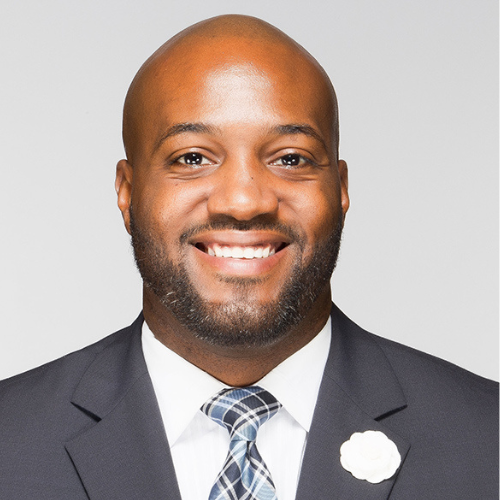Commentary on Mark 13:24-37
I’m confused.
But not by the fantastical language. This passage opens our Advent season with a classic apocalyptic text. Because readers may be unfamiliar with the specifics of this apocalyptic imagery, sermons on this passage might spend some time explaining the genre and how these “end of the world” visions line up with the coming of the Son of Man and with Advent. Apocalyptic literature makes perfect sense to me as an Advent passage, especially when found in Mark’s Gospel. My confusion is not about this language, but about whether or not we have any hope of knowing when the return is going to happen.
Is it possible to know when this return is happening or is it a fruitless pursuit? Before we answer that question, it is clear from the text that we must be in a time of preparation. The images of the Son of Man coming on clouds are a clear indicator that an end is coming, a new breaking forth of God’s work in this world is on the way. How fitting then as we begin this Advent season together that we are reminded that this time of preparation is not just a pre-Christmas period but a time of recentering in preparation for the return of our King in the here and now. We are not merely planning for a cute little baby to be born in a manger, but also for the recreation of this world when that baby returns full-grown.
It is easier for me to think of Advent as a time to get ready to replay the birth of Jesus than to think of the sky opening and a decidedly older Jesus returning on the back of a white horse. We have routines for Christmas, traditions, songs, dramas, and the like for Christmas, but preparing for Christ’s return is a bit less obvious and much more ominous. Preachers might help us wrestle with what it means to get ready for his return, what stories need to be told, songs sung, actions taken, to get ready for Christ’s return? But still, after the apocalyptic imagery of verses 24-28, I’m still unsure if we can know when this inevitable return is coming.
The first four verses of our selected text offer a poetic and apocalyptic picture of what will happen “in those days.” While I know that the moon does not give light of its own accord and I could Google the cosmic rationale for stars falling from the heavens, this imagery still serves the purpose of pointing toward some cataclysmic end. These signs are recognizable, so one might presume to be able to know and be prepared for Christ’s return.
The semi-parable that Jesus tells next about the fig tree would seem to underscore the ability to be able to know when the return is happening. The fig tree has indicators of when summer is coming, tender branches and leaves. In like manner, Jesus suggests, when we see the apocalyptic imagery that is offered in the beginning of the passage we’ll know that Jesus is near. If the passage ended there I do not think I’d be confused, as it seems pretty clear that we can read the signs to know when he’s coming. But the passage does not end there.
In what feels like a complete one-hundred-and-eighty-degree shift, verse 32 now says that no one knows the day or the hour. We are to keep awake. Stay awake and stay alert so that we can be on guard for Christ’s return. Colloquially stated we are to stay ready so that we don’t have to get ready. This is a call to a certain way of life, a call to a deepening of discipleship forged in the urgency of Christ’s imminent return. This kind of urgency is an excellent way to begin the Advent season, with messages that pick up on this tone and that call congregations to a renewed sense of urgency to live out the Kingdom of God in a world in desperate need of Christ’s inbreaking.
Yet living in a constant state of alert does not sound like a desirable and healthy life, and I’m still confused as to whether we can read the signs and know when he’s coming or if we just have to always be ready.
Do we have a chance of figuring it out? Or is this simply a declaration to remain in a state of constant alert? If it’s a constant alert, I don’t want it. It can’t be good to remain in a constant state of tension. Our fight-or-flight reflex is intended to be utilized in limited situations. Our bodies and our minds aren’t intended to remain in that kind of state of intense readiness all the time. Yet here in the text we are instructed to stay awake, to stay alert. We don’t, as the passage suggests, want to be caught sleeping when he returns. But how can we stay up all of the time?
Yes, I know that this isn’t to be taken literally, yet wrestling with this text includes trying to come to terms with what a constant and steady alert can be. And upon second glance it seems that Jesus’ final story may shine some light on how we can manage to remain alert all of the time.
In Jesus’ final mini parable, he gives the example of servants working together to take care of someone’s household. Everyone has their job, including the doorkeeper whose job is to watch the door. The reason the household can be ready for the master’s return is because everyone is working together, with their own jobs in community, and together they can stay alert.
The answer is in community. We can remain alert when we are in community. As this Advent begins, may we stress the importance of preparing in community, of watching in community, and of discerning in community as well. Because while I may be confused individually as to whether we can know the signs or whether we just have to be in constant alert, when we live in community, we can figure out how to live in that tension and make our way together through the confusion.



December 3, 2023